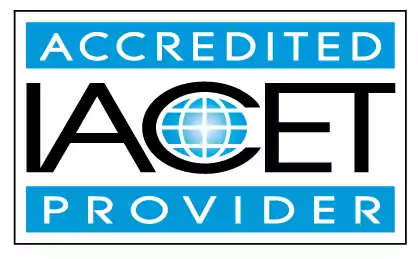Identify types of abuse, by recognizing sexual abuse
Learn how to identify types of abuse, including sexual abuse, by recognizing the signs. Understand the impact of emotional abuse on children and how to recognize it. Valuable information for early childhood education and child care centers.Trainings incorporating this outcome
Proficiency Level
Target Audience
States
Alabama (1) Alaska (1) Alberta (1) Arizona (1) Arkansas (1) Australia (1) California (1) Colorado (1) Connecticut (1) Delaware (1) District of Columbia (1) Florida (1) Georgia (1) Hawaii (1) Idaho (1) Illinois (1) Indiana (1) Iowa (1) Jamaica (1) Kansas (1) Kentucky (1) Louisiana (1) Maine (1) Manitoba (1) Maryland (1) Massachusetts (1) Michigan (1) Minnesota (1) Mississippi (1) Missouri (1) Montana (1) Nebraska (1) Nevada (1) New Hampshire (1) New Jersey (1) New Mexico (1) New York (1) Newfoundland and Labrador (1) North Carolina (1) North Dakota (1) Nova Scotia (1) Ohio (1) Oklahoma (1) Ontario (1) Oregon (1) Pennsylvania (1) Prince Edward Island (1) Puerto Rico (1) Quebec (1) Rhode Island (1) Saskatchewan (1) South Carolina (1) South Dakota (1) Tennessee (1) Texas (1) Thailand (1) United Kingdom (1) Utah (1) Vermont (1) Virgin Islands (1) Virginia (1) Washington (1) West Virginia (1) Wisconsin (1) Wyoming (1)
120 hours courses
Related Outcomes
- Identify types of abuse, by recognizing emotional abuse
- Identify the different types of portfolios used in child care programs, and the appropriate portfolio components for each type.
- Demonstrate an understanding of creating a successful block center by identifying the various types of blocks, describing an effective block center setup, and recognizing the various stages of block play.
- Identify types of abuse in infants and toddlers.
- Identify types of abuse in infants and toddlers, how to report, and who are mandated reporters.
- Identify appropriate practices for identify and demonstrate an children: Identify examples of appropriate activities for different ages
- Identify types of abuse
- Identify appropriate practices for identify and demonstrate an children: Identify importance of individual planning
- Identify signs of Physical Abuse in children
- Identify the appropriate forms and procedures for reporting child abuse and neglect
- Identify safe practices with infants including SIDS, Abusive Head Trauma, and SBS.
- Identify the signs of child abuse and neglect
- Identify different types of play
- Give examples on types of abuses and neglect.
- Identify different types of play.
- Identify different types of play in children ages 2 to 5.
- Identify different types of barriers for mixed ages with disabilities and ways to adapt curriculum to fit their needs.
- Identify appropriate practices for identify and demonstrate an children: Define Developmentally Appropriate Practice
- Identify the signs of child abuse and neglect and demonstrate knowledge of appropriate reporting process.
- Identify strategies and practices for preventing shaken baby syndrome and abusive head trauma in the child care setting
Related Articles
- Texas Child Care Licensing Training
- Neglect
- Texas Annual Abuse and Neglect Training
- Mandated Reporters
- Nevada Initial Training Requirments for Child Abuse and Neglect
- How to Start a Daycare with Little Money
- National Standards for Child Care
- Safeguarding Children's Well-being: The Importance of Mandated Reporter Training for Child Care Providers
- Is Trauma the Same for All Children?
- Understanding the Importance of Child Abuse and Neglect Training
- Basic Health and Safety Training for Child Care Providers
- Child Abuse and Neglect Training for Educators
- Basic Health and Safety: The Must-Know Training for Childcare Professionals
- Abuse and Neglect Training: The Essential Guide for Childcare Providers
- Child Abuse and Neglect Training: Empowering Educators to Recognize and Respond
- What They Don’t Tell You About Child Abuse and Neglect Training (But Should)
- Prevent, Protect, Respond: Child Abuse and Neglect Training for Educators
- Empower Your Staff with Effective Abuse and Neglect Training
- Preventing and Reporting Child Abuse and Neglect in Maryland
- 🚨 Mandatory Reporting in Nevada
 12 CEUs
12 CEUs